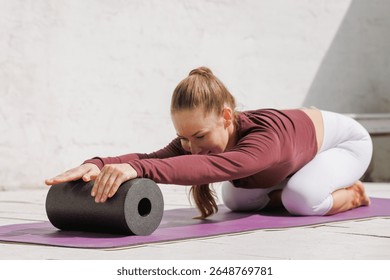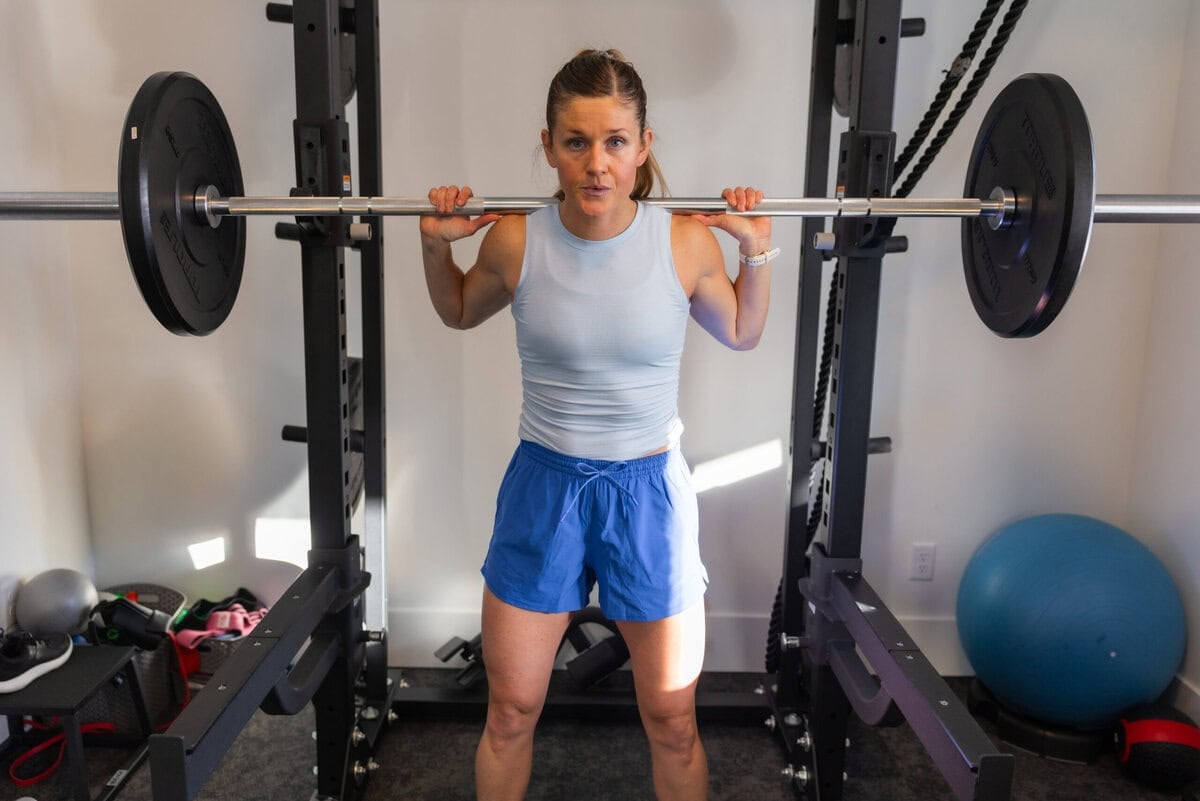Introduction: Why Now is the Perfect Time to Build Your Home Gym?
The idea of owning a home gym has long been associated with luxury and exorbitant costs, as if it were exclusive to the wealthy or professional athletes. However, the reality is far from that. In our current era, where the pace of life is accelerating and commitments are increasing, easy and convenient access to fitness has become a necessity, not a luxury. The real challenge is not the desire to exercise, but finding the balance between maintaining fitness and avoiding the financial and time burdens of subscribing to external clubs.
The Challenge and the Opportunity: Balancing Fitness and Cost
Many people face a dilemma: either pay high monthly or annual gym subscriptions, or sacrifice time and effort commuting to them. This is where the golden opportunity to create a home gym arises. Some may think this requires thousands of dollars, but this article will prove that you can build a complete and effective gym on a limited budget, focusing on value for money rather than flashy brands.
Benefits of a Home Gym: Saving Time, Money, and Gaining Privacy
Investing in a home gym is essentially an investment in your health and time. Consider this: Long-term financial savings: Once you overcome the initial setup cost, you will stop paying monthly subscriptions that can accumulate into a huge sum. Time saving: No more wasting time traveling to and from the club. You can do your workout at any time that suits you, even if it's only for fifteen minutes. Privacy and comfort: Get rid of the crowds, waiting for equipment, or feeling embarrassed. Your gym is your private space, where you can train in the clothes you are comfortable in and the way you prefer.
Phase One: Smart Planning Before Buying
The biggest mistake beginners make is random purchasing. Building a gym on a limited budget requires strategic planning to ensure that every dollar you spend serves a specific goal.
Defining Space and Goals: The Foundation for Successful Building
Before you open your wallet, you must determine two basic things: the available space and your fitness goals.
1. Assessing Available Space: You don't need an entire room. A corner in the living room, a part of the garage, or even a spacious balcony can be converted into a gym. Measure the space accurately and imagine how you will move in it. Remember that some exercises (like jumping rope) require sufficient ceiling height.
2. Defining Fitness Goals: What is your main goal? If your goal is building muscle and strength, you will need to focus on free weights (dumbbells, barbells) and perhaps a squat rack at a later stage. If your goal is improving cardiovascular fitness and burning fat, your focus will be on simple cardio equipment like a jump rope or a used rowing machine. If your goal is flexibility and yoga, a yoga mat and resistance bands will be almost all you need.
Setting a Realistic Budget: A Strategy for Wise Spending
Start by setting an overall spending ceiling. For example, you might decide that your budget will not exceed $500 (or its equivalent in local currency) in the first six months.
The 80/20 Rule: Apply the Pareto principle here. 80% of your results will come from 20% of the equipment. Focus on buying essential, versatile equipment first, and then add specialized equipment later.
Phase Two: Choosing Essential Equipment at Minimum Cost
This is the secret to building a gym on a limited budget: choosing equipment that offers maximum versatility and efficiency at the lowest price.
Core Strength Heroes: Indispensable Equipment
This equipment is the backbone of any effective home gym:
Free Weights (Dumbbells & Kettlebells): Adjustable Dumbbells: This is the smartest investment ever. Instead of buying a full set of fixed dumbbells that take up a lot of space and cost a lot, you can buy a single adjustable pair that covers a wide range of weights. Kettlebells: Excellent for functional strength training and cardio at the same time. You can start with one medium weight.
Resistance Bands: These bands are considered the cheapest and most versatile option. They can be used for warm-ups, muscle building, rehabilitation exercises, and even as an alternative to complex cable machines. They are lightweight and easy to store.
Pull-up Bar: If you have strong doors, a pull-up bar that mounts on the door frame is an excellent way to train your back and arms for a cost of no more than a few dollars.
Smart Cardio: Alternatives to Bulky and Expensive Machines
Avoid buying treadmills or stationary bikes initially, as they are expensive and take up a lot of space. Here are the smart alternatives:
Jump Rope: The king of low-cost cardio. It provides an intense workout for burning calories and improving cardiovascular fitness, and it costs almost nothing.
Bodyweight Exercises: Push-ups, squats, lunges, planks... these exercises require no equipment at all and are the foundation of building functional strength.
Yoga Mat: Essential for protecting your joints and comfort during floor exercises, and it is a simple investment in safety.
Suggested Essential Equipment List (Table)
| Exercise Type | Suggested Equipment | Estimated Cost (Low/Medium) | Importance |
|---|---|---|---|
| :--- | :--- | :--- | :--- |
| Strength | Adjustable Free Weights (One Pair) | Medium (Initial Investment) | Very High |
| Strength/Flexibility | Set of Resistance Bands | Low | Medium |
| Cardio | High-Speed Jump Rope | Very Low | High |
| Floor Work | Thick Yoga/Exercise Mat | Low | High (for Safety) |
| Strength (Upper Body) | Doorway Pull-up Bar | Low | Medium |
| Strength (Core) | Stability Ball | Low | Medium |
Phase Three: Advanced Saving Strategies
The smart athlete doesn't just buy cheap equipment, they buy smartly.
Smart and Used Buying: Be a Deal Hunter
Used Sales Platforms: Browse local used sales apps and websites. People often sell their sports equipment in excellent condition and at low prices after losing enthusiasm. Look for iron weights, bench presses, and even large cardio machines. Inspecting for Defects: When buying used equipment, ensure the safety of mechanical parts (such as cardio machine cables or weight locking mechanisms). A few scratches are fine, but do not compromise on structural safety.
DIY (Do It Yourself): Innovative Solutions from Home
You can save large amounts of money by using materials available at home:
Alternative Weights: Fill plastic buckets with sand, gravel, or water to create heavy weights for carrying or lifting exercises. Sandbags: Buy durable canvas bags and fill them with sand. Sandbags are an excellent and very cheap functional training tool. Lifting Blocks: Use sturdy wooden blocks or old books to elevate your feet during lunges or to increase the range of motion in push-ups.
Investing in Quality First: When Should You Pay More?
Although the goal is to save, there is some equipment that you should invest in with high quality to ensure your safety and the longevity of the equipment:
Adjustable Weights: Invest in a reliable brand. These weights will be the focus of your training, and poor quality may lead to the breakage of the locking mechanisms and injury. Flooring: If you plan to lift heavy weights, thick rubber mats are essential to protect your home floor and reduce noise. Do not skimp on this aspect.
Phase Four: Preparing the Space and Training Environment
A gym is not just equipment, it is a stimulating environment.
Flooring and Insulation: Protection for You and Your Home
Inexpensive Rubber Tiles: You can buy interlocking rubber tiles to cover the training area. This protects the floor from scratches and shocks and reduces the noise from dropping light weights. Ventilation and Lighting: Make sure the space is well-ventilated. If there are no windows, invest in a simple fan. Natural or bright lighting helps lift spirits and focus.
Organization and Motivation: Making the Gym an Attractive Place
Vertical Storage Solutions: Use wall shelves or baskets to store small equipment (resistance bands, jump rope). Good organization makes the space look bigger and reduces the risk of tripping. Mirrors and Posters: A mirror can be an excellent training tool for monitoring exercise form and correcting mistakes. Motivational posters or bright colors can also increase your enthusiasm.
Additional Practical Tips for Maximizing Benefit
To get the most out of your simple home gym, follow these tips:
1. Functional Training: Focus on compound exercises that engage more than one muscle group at a time (such as squats, deadlifts, push-ups). These exercises are more efficient and require less equipment. 2. Free Technology: Take advantage of free exercise apps and YouTube channels that offer complete training programs using minimal equipment. This saves you the cost of a personal trainer. 3. Regular Maintenance: Wipe down the equipment regularly and ensure all screws and nuts are tight, especially on adjustable weights. Simple maintenance extends the life of your equipment and saves you the cost of replacement. 4. Gradual Purchasing: Do not buy everything at once. Start with the basics (mat, rope, resistance bands). After two months, if your commitment continues, invest in adjustable dumbbells. Gradual purchasing ensures you only invest in equipment you will actually use.
Conclusion: A Long-Lasting Investment in Health
We have proven that building an effective home gym does not require a fortune. It requires smart planning, a search for value, and commitment. By focusing on essential, versatile equipment, taking advantage of used buying options, and implementing "Do It Yourself" solutions, you can transform any small space into a fitness center.
Summary of Key Points
Plan First: Define your goals and available space before any purchase. Prioritize Versatility: Invest in equipment that serves more than one purpose (such as adjustable dumbbells and resistance bands). Buy Smart: Do not hesitate to buy high-quality used equipment. Safety is Non-Negotiable: Invest in flooring mats and structural equipment to ensure your safety.
Call to Action: Start Today with Your Available Budget
Do not wait for the "perfect time" or the "big budget." Start today by buying a jump rope and a yoga mat. Commitment is the most important piece of equipment in your home gym. Start your gym, and start your journey toward better health.



